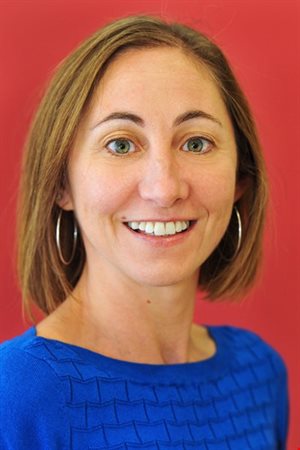Our research programme is currently on hold due to COVID-19 but we took this downtime opportunity to catch up with Dr Elisabete Silva to learn more about her motivations to become a scientist and her current Breast Cancer UK funded research project.
 Originally, Elisabete Silva had planned to be a pharmacist in her home country of Portugal when her life took a different turn. It was on her pharmacy course, when she came to the UK to study, where she began to become interested in toxic chemicals and the way they affect the body, and from here she decided that this was far more interesting than life behind a pharmacy counter.
Originally, Elisabete Silva had planned to be a pharmacist in her home country of Portugal when her life took a different turn. It was on her pharmacy course, when she came to the UK to study, where she began to become interested in toxic chemicals and the way they affect the body, and from here she decided that this was far more interesting than life behind a pharmacy counter.
Her passion was shaped by the fact there are many chemicals society still knows nothing about and yet continues to use. “Take the pesticide DDT, for example,” says Elisabete. “It was banned 30 years ago and yet most of us still have traces of it or one of its metabolites, in our bodies. That’s how long it stays in the system for.”
Her career was also shaped by personal factors. The women in Elisabete’s family had a long history of breast cancer, and she’d become interested in how certain toxic chemicals can lead to an increased proliferation of breast cancer cells.
It was these specific chemicals, which disrupt the endocrine system (hormonal system) by mimicking female hormones, that turned her into a ‘research detective’.
“What I found most interesting, was that scientists had been studying these individual chemicals on their own for a while and had concluded there was no significant evidence they were harmful to the body.,” says Elisabete. “But what they did less of, was to investigate how combinations of chemicals impacted human health. They also didn’t investigate how these chemicals could act together with other risk factors, such as a high fat diet, to increase the risk of diseases like breast cancer.”
It was an equation that she wanted to solve. High saturated fat has a link to obesity. And obesity not only has a link to breast cancer, but these fatty cells are more likely to absorb and retain chemicals too; especially those with links to breast cancer. And Elisabete’s current research is aiming to discover whether certain hormone disrupting chemicals found in everyday products, when combined with a high fat diet, makes women more prone to breast cancer.
Elisabete’s current research is also using cutting edge techniques. Elisabete says: “I was really pleased to hook up with a group of bioengineers who could help me with an exciting new technique called Organ-on-Chip”. This is a type of platform, a little smaller than a Post-It note, which allows the cell cultures to grow in 3D rather than flat. Also, the ‘chip’ allows a constant flow of nutrients and communication between different cells, making them think they are still in the body. “So, in the case of our research, the cells actually think they are in the breast – and behave like they are in the breast!” she says.
Elisabete’s work has made her passionate about doing the most she can to avoid harmful chemicals in her daily life. During pregnancy she avoided all potentially harmful chemicals, to protect her unborn son, who is now eleven. These days she does her best to steer clear from cosmetics and consumer goods that may contain hormone disrupting chemicals and uses very natural products on her skin. However, she believes strongly it’s the responsibility of policy makers to keep people safe from harmful chemicals that may have links to breast cancer. “It shouldn’t be the responsibility of consumers to wonder whether what they are buying is safe or not.” she says.
Elisabete’s research, at Brunel University, will take two years and will resume when the laboratory where she works reopens following the Covid-19 Pandemic.
Without your support our scientific research would not be possible, DONATE TODAY and help fund vital research to prevent more people being diagnosed with this terrible disease. Thank you.
This was first published by Breast Cancer UK. Dive into more articles on Breast Cancer UK website.
Reported by:
Lizzy Gooderham
elizabeth.gooderham@brunel.ac.uk